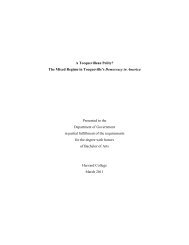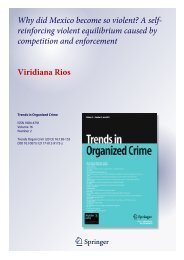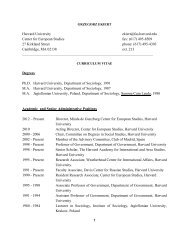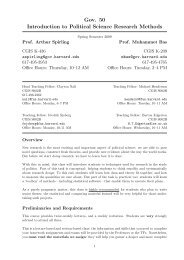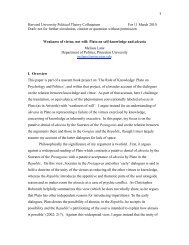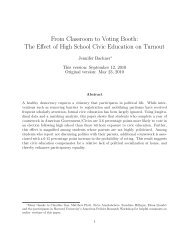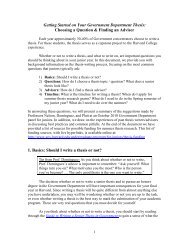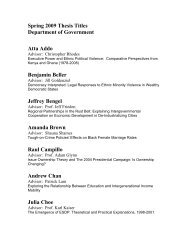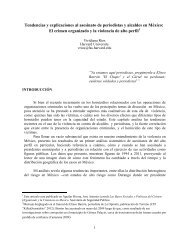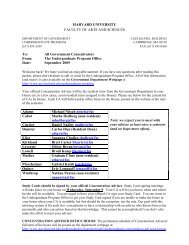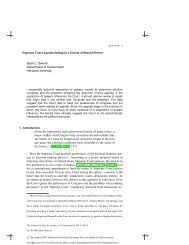Security issues and immigration flows: Drug-violence refugees, the ...
Security issues and immigration flows: Drug-violence refugees, the ...
Security issues and immigration flows: Drug-violence refugees, the ...
You also want an ePaper? Increase the reach of your titles
YUMPU automatically turns print PDFs into web optimized ePapers that Google loves.
Figure 2 shows a map of 2.5 thous<strong>and</strong> Mexican counties (population) <strong>and</strong> <strong>the</strong><br />
number of drug-<strong>violence</strong> <strong>refugees</strong>. The cities with <strong>the</strong> largest burden during 2006 — 2010<br />
are Ciudad Juarez, Culiacan <strong>and</strong> Tijuana with 40.99, 12.4 <strong>and</strong> 11.37 thous<strong>and</strong> inhabitants<br />
leaving unexpectedly, respectively. In relative terms, <strong>the</strong> cities with <strong>the</strong> largest<br />
drug-related migration out<strong>flows</strong> are Guadalupe, Mier <strong>and</strong> Gral. Trevino with 9% of <strong>the</strong>ir<br />
population leaving unexpectedly because of security concerns. All figures, by county <strong>and</strong><br />
type of crime (drug-related homicides or extortion) at appendix 1 (to be posted at author’s<br />
website, along with ArcGIS files) as open-source material to be used by o<strong>the</strong>r academics<br />
interested in <strong>the</strong> topic.<br />
[Figure 2 about here]<br />
My estimate of 264,693 Mexican <strong>refugees</strong> of <strong>violence</strong> matches what ethnographic,<br />
journalistic, <strong>and</strong> public opinion accounts have been describing as a massive Mexican exodus<br />
both within Mexico <strong>and</strong> from Mexico to <strong>the</strong> US. At <strong>the</strong> US, Henry Cisneros, former<br />
mayor of San Antonio, Texas, classified Mexican migration <strong>flows</strong> as <strong>the</strong> “largest since<br />
<strong>the</strong> 1920s” <strong>and</strong> acknowledged that “whole areas of San Antonio () are being transformed<br />
(Sheridan, 2011).” Within Mexico, recent opinion polls have showed that out of all people<br />
interviewed, 17% had moved its residency because of drug <strong>violence</strong> or to run away from<br />
criminal activities. This represents about 2% of <strong>the</strong> total migration <strong>flows</strong> happening in<br />
<strong>the</strong> country (Parametria, 2010), slightly above my own estimates.<br />
Perhaps, <strong>the</strong> most telling study case of drug-<strong>violence</strong> migration <strong>flows</strong> is that of<br />
Juarez, Chihuahua, <strong>and</strong> its US-city counterpart, El Paso, Texas. The impacts of Mexican<br />
out<strong>flows</strong> have been felt with such strength at El Paso that some have even claimed that<br />
“a sort if ’Little Juarez,’ akin to Miami’s Little Havana, is emerging” (Martinez, 2011).<br />
Housing, schooling, business associations <strong>and</strong> many o<strong>the</strong>r spheres have changed significantly<br />
over <strong>the</strong> last couple years to adapt to new migration patterns.<br />
16



